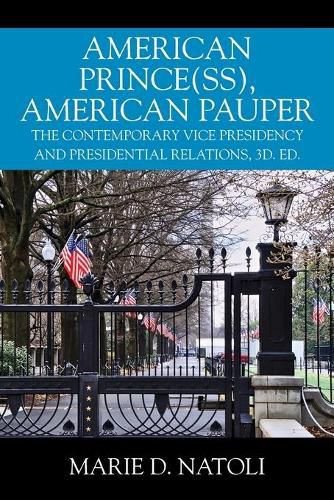Readings Newsletter
Become a Readings Member to make your shopping experience even easier.
Sign in or sign up for free!
You’re not far away from qualifying for FREE standard shipping within Australia
You’ve qualified for FREE standard shipping within Australia
The cart is loading…






This title is printed to order. This book may have been self-published. If so, we cannot guarantee the quality of the content. In the main most books will have gone through the editing process however some may not. We therefore suggest that you be aware of this before ordering this book. If in doubt check either the author or publisher’s details as we are unable to accept any returns unless they are faulty. Please contact us if you have any questions.
Once there were two brothers. One went to sea and the other became Vice President. Neither was heard from again. Vice President Marshall’s humorous story reflects the neglect the office has been given. Yet, as a heartbeat away from the Presidency, the office is the key to a smooth transition in the executive branch. With the growth of the modern Presidency (beginning with FDR), the Vice President’s role has also grown. This work is a generic work on the second office. It follows a thematic, rather than a chronological or biographical approach to the subject of the Vice Presidency. Included in the work are such topics as considerations in selecting a vice presidential running mate; the evolving role of the office; the Vice President’s role as an administration spokesperson; the VP’s relationship to presidential staff; the importance of both presidential and vice presidential personality in defining the role of a particular Vice President; the question of whether the Vice Presidency is a steppingstone or stumbling block to election to the Presidency. The work also compares the three instances of Vice Presidential succession to the Presidency during the time frame under study (Truman; Johnson; Ford), pointing out that a Vice President has a one in five chance of moving into the Presidency via succession. Included, too, is a succinct discussion of the merits and flaws of the Twenty-Fifth Amendment, a delineation of what the role of the Vice President should be during a presidential disability, as well as the process for filling vacancies in the Vice Presidency.
$9.00 standard shipping within Australia
FREE standard shipping within Australia for orders over $100.00
Express & International shipping calculated at checkout
This title is printed to order. This book may have been self-published. If so, we cannot guarantee the quality of the content. In the main most books will have gone through the editing process however some may not. We therefore suggest that you be aware of this before ordering this book. If in doubt check either the author or publisher’s details as we are unable to accept any returns unless they are faulty. Please contact us if you have any questions.
Once there were two brothers. One went to sea and the other became Vice President. Neither was heard from again. Vice President Marshall’s humorous story reflects the neglect the office has been given. Yet, as a heartbeat away from the Presidency, the office is the key to a smooth transition in the executive branch. With the growth of the modern Presidency (beginning with FDR), the Vice President’s role has also grown. This work is a generic work on the second office. It follows a thematic, rather than a chronological or biographical approach to the subject of the Vice Presidency. Included in the work are such topics as considerations in selecting a vice presidential running mate; the evolving role of the office; the Vice President’s role as an administration spokesperson; the VP’s relationship to presidential staff; the importance of both presidential and vice presidential personality in defining the role of a particular Vice President; the question of whether the Vice Presidency is a steppingstone or stumbling block to election to the Presidency. The work also compares the three instances of Vice Presidential succession to the Presidency during the time frame under study (Truman; Johnson; Ford), pointing out that a Vice President has a one in five chance of moving into the Presidency via succession. Included, too, is a succinct discussion of the merits and flaws of the Twenty-Fifth Amendment, a delineation of what the role of the Vice President should be during a presidential disability, as well as the process for filling vacancies in the Vice Presidency.